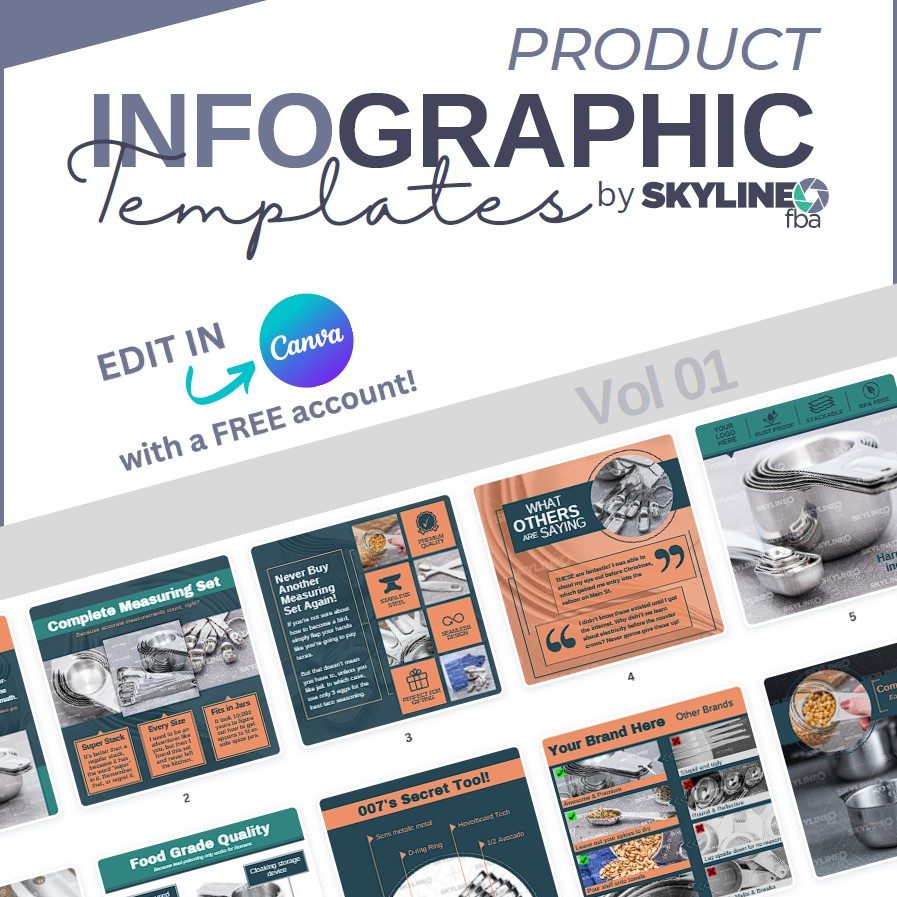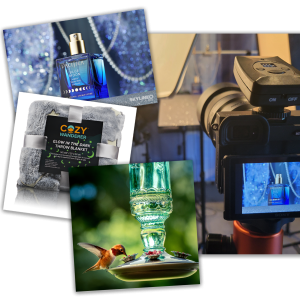Most product photographers use a combination of strobe lights and speedlights to achieve the best lighting possible for their shots. Photographing products to be sold online is an incredibly important step in the world of eCommerce. Clients want top-notch photos of their product, and top-notch photos mean top-notch lighting.
Strobe lights are generally the better overall option for product photography. They have more power and more modification options, allowing for the more refined lighting adjustments required of good product photography. The modelling light feature also saves time when placing products and lights.

In this article, we’ll break down the differences between speedlight and strobe lighting, and paint a picture (get it?) of why strobes are the way to go when photographing products. Are you just starting out? Don’t worry; we’ll talk about how speedlights can work just fine on a budget as well.
Table of Contents
What Is The Difference Between A Speedlight And Strobe?
Before getting into the use of each light and how it applies to product photography, it will help to understand the difference between the two.
| Feature | Strobe Light | Speedlight |
|---|---|---|
| Cost | Higher Cost ($300 – $1,000+) | Lower Cost ($60 – $500) |
| Portability | Larger, heavier. | Small, battery powered, lightweight. |
| Power Output | More (250W – 1200W) | Less (60W – 100W) |
| Creative Capability | More modifications available | Less modifications available |
As with any type of gear, these lights differ in practical regards, like cost and portability. But they also differ technically in how they go about generating light.
Light Is Light, Isn’t It?
Yes, and at the same time, no. The biggest difference between these tools is the power output. Physics says more wattage means more light, and since light is a photographer’s best friend, who wouldn’t want more of it?
Another thing to consider here is the size of the light source. A rule of thumb here is: the smaller the light source, the harsher the shadows. Conversely, strobe lights, with more power and large umbrellas or softboxes, produce a larger light footprint, thus softening shadows.
In general, there are many more modifications available on the market today for strobe lights than there are for speedlights. This makes them a more versatile creative option when used in a studio.
Are Speedlights Useless For Product Photography?
Light is light, and in some situations, the practicality of speedlights prevails. Speedlights differ from strobe lights in that they are:
- Smaller
- Lighter
- Battery Powered
All of this equates to portable and maneuverable.
They can get away with being battery powered because they put out less power each time they flash. And because they’re lightweight and small, they can be mounted to the camera, or as standalone lights.
Mounting a strobe to your camera just isn’t an option.
One downside of speedlights to keep in mind is that they may not be as useful to a photographer needing to shoot with a narrower aperture (product photography is generally shot above f8). Because the camera is already taking in less light, the already low-powered speedlight flash will likely not be able to contribute any value to the composition.
What Lighting Is Best For Product Photography?
Now that we’ve defined the difference, it may start to become evident that the strobe light is the better option for product photography – and you would be correct.
More often than not, products will be photographed in a studio and there is a lot of work that will go into setting up the composition.
- Propping up the product
- Setting the backdrop
- And of course, lighting
So, since this is all happening in your studio, the lack of portability of strobelights really becomes a non-issue. Most of the time, the products come to you – which is one of the biggest benefits of product photography in the first place!
If portability is a big deal, though, there are some battery powered strobe lights available. Just keep in mind that what they gain in portability they give up in power output.
Since a lot of time goes into setting up the composition, another huge benefit of strobe lights emerges. That is the modeling light feature, most strobes have them.
While it would be impractical for either flashbulb to put out its maximum power continuously as you set up a shot, it does help to have some form of light coming from the source to better compose the shot.
Most strobe lights are equipped with a secondary halogen or led bulb to shine on the subject as it is staged. This is extremely helpful, as any product photographer will tell you that the process of test shot, adjust, test shot, adjust, test shot is just frustrating (not to mention a drain on speedlights’ batteries!).
This seemingly infinite loop wastes A LOT of time.
- So the use of a modeling light on strobes will be very helpful when setting up the light stands for a product shoot.
- We also mentioned that a larger light footprint would not produce harsh shadows as a smaller one would.
For those two reasons, strobe lights are generally the better option for product photography. When you think about it, clients who usually sell on Amazon need crystal clear, well-lit photos of their products, against a pure white background.
While this can be achieved by using speedlights, it is much easier to do with studio strobe lights.
Speedlights Can Work For Product Photographers On A Budget
Speedlights are not completely obsolete when it comes to product photography, though. In fact, it’s not uncommon for photographers to use a combination of both when shooting products.
We like to use speedlights as a way to fill in/light certain details for different aspects of our compositions.
If you’re just starting out and your budget is tight, speedlights can do the trick after enough trial and error. There are a few other pros to mention when talking about speedlights in the context of product photography:
- Portability for “lifestyle” photos
- Squeezing lights into tight spots for detailed shots
The white background shots are not the only composition requested from product photographers. In many cases, clients will also want shots of their products “in use.” This could mean going onsite to shoot a model using said product or just photographing the product in its intended environment.
This is where it’s handy to bring along a speedlight.
In the studio, too, you may need to position lights where you just can’t get a big old strobe lamp. This is another area where small speedlights come in clutch.
How Do Photographers Use Strobe Lights?
Typically, strobe lights are much too big to connect to a camera. So, photographers will use them as freestanding light sources.
This, of course, would require lighting stands and sync cables. Still, it enables the freedom to place quality lighting anywhere it’s necessary… especially if they go with a wireless sync remote instead of a cable.
A good product shot will have at least two light sources:
- Front lighting
- Back lighting
From there, as many or as few lights can be added for infinite combinations of lighting angles.
As we’ve touched on earlier, there are many more modification options for strobe lights available today than there are for speedlights.
Photographers using strobe lights will typically use one of the following to increase the light footprint:
- Beauty dish
- Bowl reflector
- Umbrellas
- Ring flash
- Softbox
- Stripbox
All of these are intended to change the footprint of a strobe light, something that generally can’t be done with a speedlight. However, you can use a Bowens Mount Holder to mount your speedlight to your light stand with your desired modifier (if it uses the same type of mount).
Product photographers will also use the modeling light while composing shots.
We’ve already mentioned that this feature is a big time saver. Setting up, adjusting and getting the strobe lights just right is arguably the biggest part of product photography.
The modeling lights make this possible, so you can get a better idea of what a shot will look like when lit. This makes strobe lights very useful for experimenting quickly with different lighting angles – not to mention that you wont be burning through batteries.
Want Better Product Photography? Final Thoughts
To wrap up, lighting is important in photography, and even more so in product photography. Since most of it will be shot in a studio, it’s worth investing in the higher power options that strobe lights provide.
The good news is that you can be successful with product photography regardless if you’re using strobes or speedlights, and in many cases you’ll want to have both on hand.
I have to assume that if you’re investigating the difference between a speedlight vs strobe lighting for product photography then you may not have the necessary equipment that a professional studio will likely already have.
If that’s the case, check out the table below for some of the best beginner equipment!
[table id=1 /]



